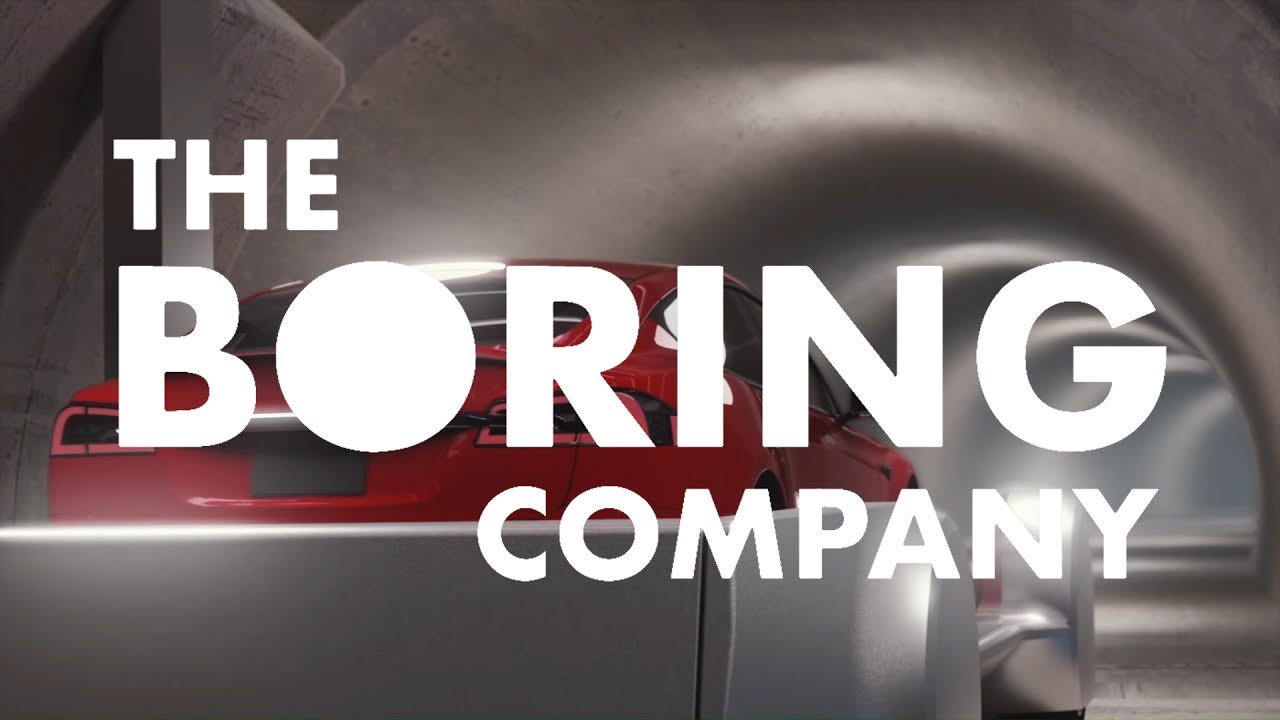History:
Elon Musk discusses The Boring Company at TED 2017.
Elon Musk announced the existence of The Boring Company in December 2016.[10] By February 2017, the company had begun digging a 30-foot-wide (9 m), 50-foot-long (15 m), and 15-foot-deep (4.6 m) testing trench on the premises of SpaceX's offices in Hawthorne, since construction on its site would not require any permits.[4][11] When told by employees on a Friday afternoon that it would take at least two weeks to move staff cars in the parking lot and start digging the first hole with TBC tunneling machine, Musk said, "Let's get started today and see what's the biggest hole we can dig between now and Sunday afternoon, running 24 hours a day." Later that day, the cars were gone and there was a hole in the ground.[12] The Boring Company was initially formed as a subsidiary of SpaceX[13] before becoming an independent company in 2018.[14]
In an interview during a TED conference in April 2017, Musk estimated that The Boring Company project had taken 2–3% of his time, making this venture a personal hobby.[15]
In March 2017, Musk announced that sometime in April the company would start using a tunnel boring machine (TBM) to begin digging a usable tunnel at SpaceX.[16] At the end of April 2017, a TBM was seen at SpaceX with The Boring Company's name on the side.[17] The name of the TBM was revealed as Godot in May 2017, named after the Beckett play Waiting for Godot. Future TBMs will also be named after poems and plays.[18] Musk said the first route created would run from LAX to Culver City, then to Santa Monica, and end in Westwood. Musk claimed the tunnel trip will take five minutes, compared to above-ground driving which takes 45 minutes in normal traffic (from LAX to Westwood).[19] These trips were planned to be implemented by placing a car on an electric sled and traveling at 120 miles per hour (200 km/h) through tunnels. By November 2017, the company had filed a permitting application with Los Angeles government regulators to build a tunnel from Hawthorne along Interstate 405 to Westwood.[20] The project never advanced.[21]
At the same time as the Los Angeles tunnel system was announced, a different project involving a Hyperloop (a sealed tube) running underground from New York City to Washington, D.C, was announced.[22] Musk claimed it would take 29 minutes to travel from one city center to the other.[22] Other Hyperloop projects include one from San Francisco to Los Angeles and another inside Texas, which were being considered for a later phase.[23]
In July 2017, Musk uploaded a video depicting a successful test of a prototype car elevator.[24] In October, Musk revealed the second TBM is named Line-storm, named after the Robert Frost poem “A Line-Storm Song”.[25] March 2018, Elon Musk announced that the company would readjust its plan to prioritize pedestrians and cyclists over cars;[26] cars would only be considered for transport after all other "personalized mass transit needs" were met.[27]
Elon Musk during the inauguration of the test tunnel in Hawthorne, California
In early 2018, The Boring Company was spun out from SpaceX and into a separate corporate entity. Somewhat less than 10% of equity was given to early employees, and over 90% to Elon Musk. Subsequent concerns by SpaceX shareholders resulted in a December 2018 reallocation of 6% of The Boring Company's equity to SpaceX.[14] TBC provided an update on the state of their technology and product line in December 2018 when they opened to the public their first 1-mile-long (1.6 km) test tunnel in Hawthorne, California.[28] In July 2019, The Boring Company authorized the first external investment, selling US$120 million in stock to a number of venture capital firms,[29] after raising $113 million in non-outside capital during 2018.[30]
By November 2019, Steve Davis had become the president of The Boring Company after leading company efforts for Musk since 2016. Davis was one of the earliest hires at SpaceX (in 2003) and has twin master's degrees in particle physics and aerospace engineering.[31] In November 2020, The Boring Company announced hiring for a number of positions in Austin, Texas, and by December 2020 had leased two buildings in a 14-acre (5.7 ha) industrial complex northeast of Austin, approximately 16 miles (26 km) north of where Tesla is building its Texas Gigafactory.[3]

Comments
Post a Comment